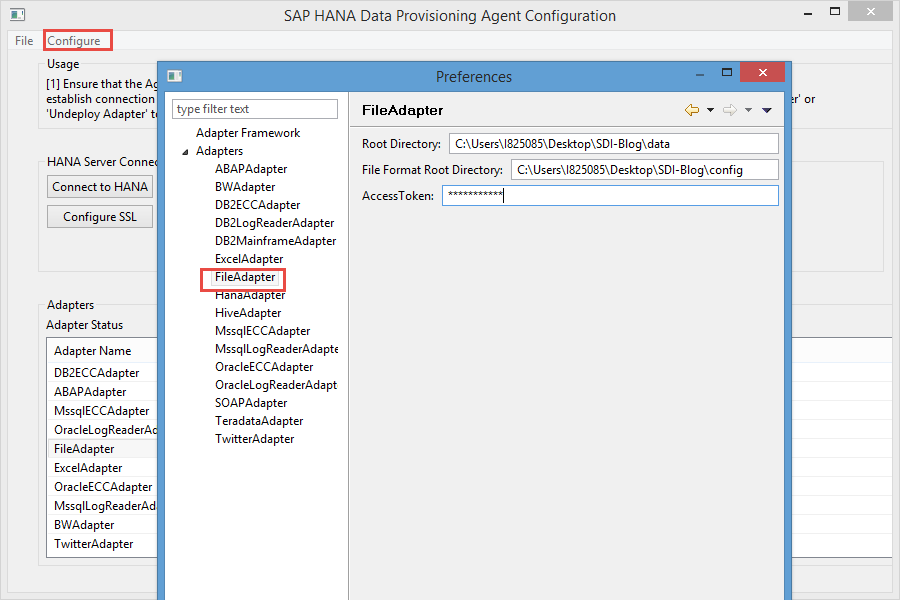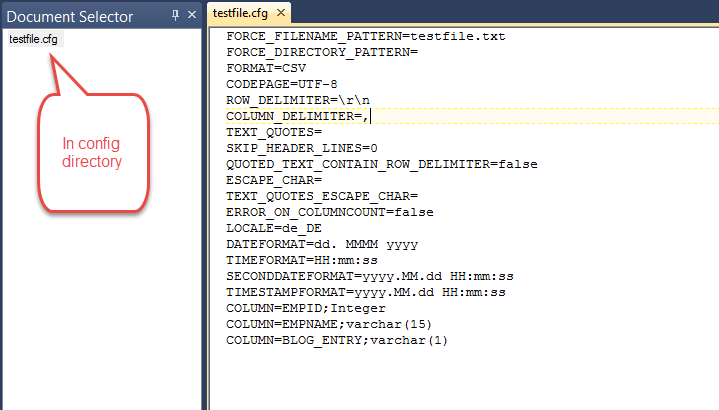continued from HCP Integration Service - Part 2
Create an OS directory for data and config and use them in the configuration for a new FileAdapter

Register the FileAdapter


The next steps will create a virtual table. Remember the file source itself is remote (on-premise) and HANA is in the cloud. This virtual table will capture the file contents and is dynamic - not only will be file be presented as a table but subsequent CRUD operations on the file itself will be accessible on the cloud through iterative queries against the virtual table. What is happening is that:
- query against the virtual table triggers a request to SDI. This is a blocking request. SDI enqueues this request for the DP agent
- at periodic intervals, the DP agent logs in into HCP and picks up this request. The DP agent then pushes the file contents to HCP
- SDI serves this to the blocking request (the query)
- The query returns the result set. No data is stored in HANA.
- Note that this is just one technical use case of the DP Agent. The DP agent can also be used for bulk loads (via a flowgraph) or as a change capture agent for several databases.
Create a remote source based on file adapter:
(Note: System Privilege “CREATE REMOTE SOURCE” is required)


Create the config file in the on-premise OS config directory created previously

Create the CSV file in the data directory

Import virtual table:

A query against the virtual table displays contents of the on-premise file!

Modifications to file and a subsequent query displays the modifications on HCP as well.


There you have it. The intent was to present a simple install and execution of SDI in HCP to understand the technical value of HCP, Integration Services
